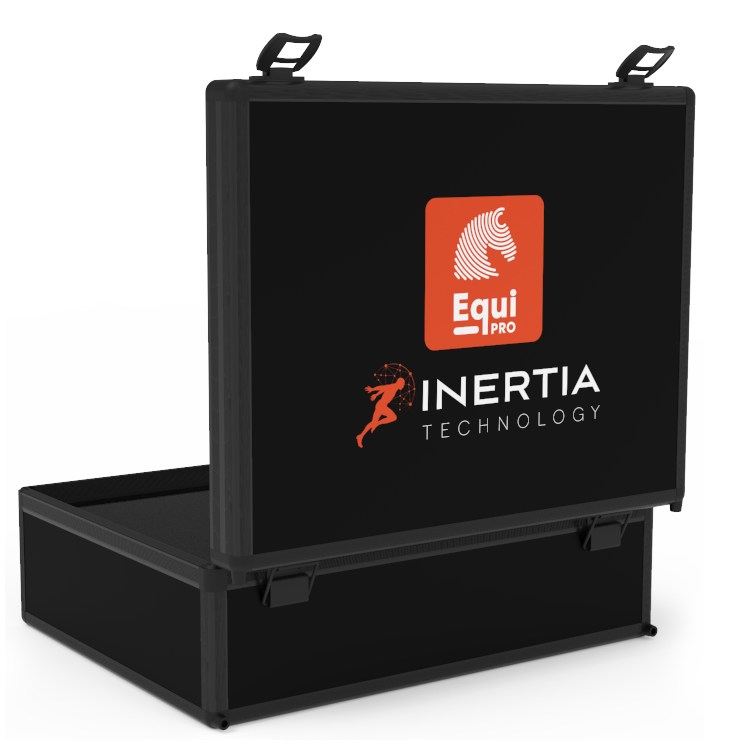With Equi-Pro®, an accurate measurement of the main parameters of the horse’s movement can be obtained, including upper-body symmetry and limb-related parameters.
In the standard Equi-Pro configuration, 7 wireless ProMove-V sensor nodes are used: three sensors on the upper body (head, withers and pelvis) and four sensors on the limbs. The extended configuration includes two more sensors on the left and right tuber‐coxae. A gateway device connected to a laptop is used for high-speed wireless data acquisition and synchronization.

Placing the sensors on the horse is straightforward. This is done using the horse attachments provided in the kit and consumables, such as double-sided adhesive tape and animal polster.

The horse can be examined in any gait: walk, trot, left‐lead canter, right‐lead
canter, tölt and pace, and can be worked on a straight line or in a circle, on either hard or soft surfaces.

The sensor data is transmitted wirelessly to the gateway and the Equi-Pro application running on the laptop. At the end of the measurement, the data is synchronized and processed to obtain the measurement results.

The results correspond to the motion of the upper-body and legs of the horse. They are presented along a timeline with different gaits, surface conditions and direction of movement.

Symmetry parameters for the upper-body head, withers and sacrum include:
- The symmetry index, which ranges from ‐1 to 1. A value of 0 indicates perfect symmetry. A value of ±1 indicates maximum asymmetry. The sign depends on the affected limb.
- Min_diff – the difference between the first and the second minimum peaks in the vertical displacement signal. A value of 0 indicates perfect symmetry.
- Max_diff – the difference between the first and the second maximum peaks in the vertical displacement signal. A value of 0 indicates perfect symmetry.
- Hip-hike (optional), which is a symmetry parameter that measures the difference in vertical displacement of the left and right tuber‐coxae in both the swing and stance phases of the stride. It requires two additional sensors, the LTC and RTC, on the left and right tuber‐coxae. A value of 0 indicates a perfect symmetry.


The leg parameters include:
- The timing of footfalls, which is the expression of rhythm, defined as the
order of placing the hoofs on the ground in a complete stride. - The swing intensity, which is the range of motion of one stride; it is used for expressing the moments of impact and the beats per leg.
- The stance duration, which is the time in which the limb is in contact with the ground during the limb motion cycle.
- The swing duration, which is the time in which the limb is free from contact with the ground during the limb motion cycle.

The leg parameters also include protraction and retraction angles, as well as abduction and adduction angles.


Optionally, the speed of the horse is computed from a GNSS‐enabled sensor.




